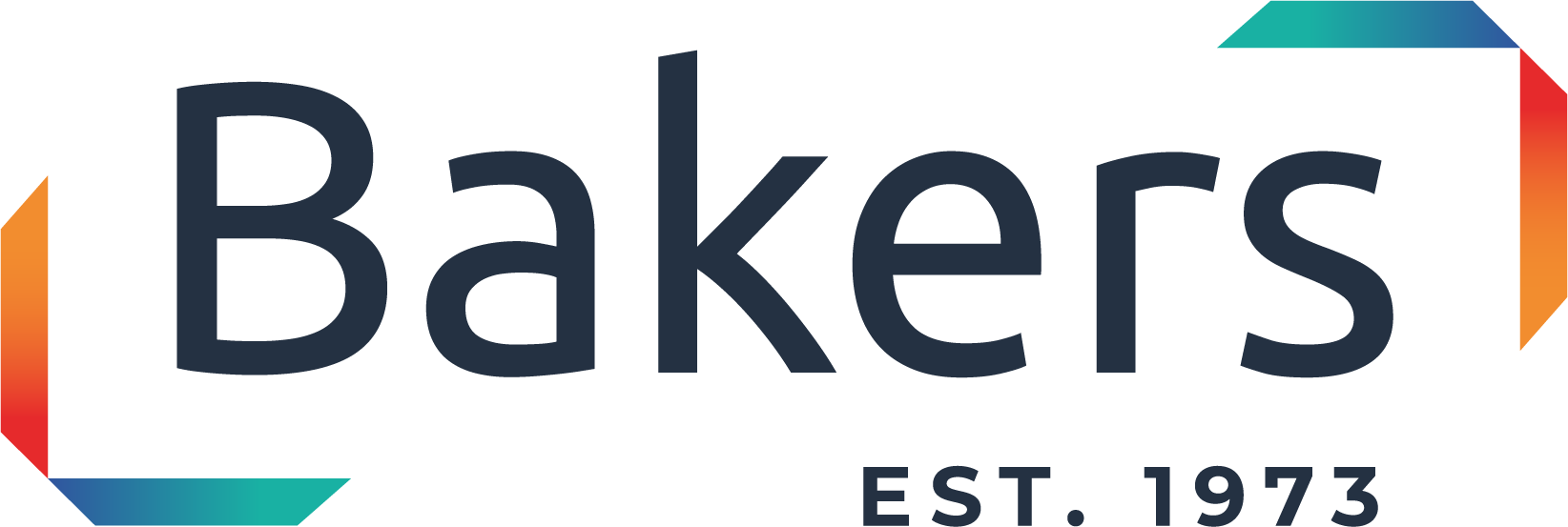The Ultimate
Artwork Guidelines for Perfect Label Printing
Getting your label artwork right from the start saves time, avoids costly reprints, and ensures your product looks exactly how you envisioned it. At Bakers, we work with both digital and conventional printing methods, giving customers the flexibility to print short runs, high-volume orders, and premium embellishments.
It’s no surprise that one of the most common challenges we manage for our customers is artwork setup!
To make things simple, our Pre-Press Studio and Technical Team have compiled this go-to artwork guidelines covering everything from file formats and colour consistency to barcodes and dielines.
File Formats & Resolution →
Colour Matching & Print Accuracy →
Dielines, Cut Paths & White Ink Setup →
Fonts, Barcodes & Small Print Considerations →
Common Mistakes to Avoid →
File Formats & Resolution – Get It Right First Time
What’s the best file format for label printing?
A high-resolution PDF is recommended.
AI or EPS – Ensure fonts are outlined and images are embedded.
TIFF or PSD – Preferably with layers
What resolution should label artwork be?
Minimum 300dpi (dots per inch).
Avoid low-resolution images, as they will print pixelated.
Bleed & Print Tolerance Area: What’s required?
Include minimum 1.5mm bleed on all sides.
Keep text and important elements a minimum of 1.5mm inside the trim edge.
(For multi-layer peel and reveal labels increase the tolerance to a minimum of 2mm.)
Colour Matching & Print Accuracy
RGB or CMYK – Which colour mode is best for printing labels?
Always design in CMYK, as RGB is for screens and won’t print correctly.
Pantone Matching: Can you print exact brand colours?
Yes! We can match Pantone colours with our conventional printing methods.
For digital printing, Pantones are converted to CMYK which may not be an exact match. If colour precision is critical, ECG (Extended Colour Gamut of orange, violet and green) printing is an option which can enable closer matching to difficult Pantone target colours.
At Bakers we use GMG Color Management software to get as near a match as possible.
How to achieve accurate colour expectations
Supply a Pantone reference if brand colours are critical.
Request a printed proof if colour accuracy is essential.
Be aware that materials (gloss, matt, clear) can affect final colours.
At Bakers we also use X-Rite Spectrophotometers during print runs to ensure colour consistency.
What’s the difference in colour accuracy between digital and conventional printing?
Conventional printing (Flexo) is best for exact Pantone matching.
Digital printing is more flexible for short runs and variable data but certain vibrant Pantones may be difficult to match out of CMYK (see ECG printing above).
Want to know more? Understanding Colour Management in Label Printing
Dielines, Cut Paths & White Ink Setup
How should dielines or cutter guides be set up?
Create a separate layer named “Cutter” or “Dieline”.
Use a spot colour (not CMYK) to indicate the cut path.
Printing on clear or metallic materials? You need white ink!
Create a separate white spot ink layer named “White Ink”.
Areas without white ink will appear transparent or metallic.
Want embossing, foiling, or spot varnish?
Each effect must be on a separate layer and given a spot colour.
Check out our Embellishment Options: Label Embellishments
Fonts, Barcodes & Small Print Considerations
How small can text be on labels?
3pt minimum for standard text.
5pt minimum for reversed-out text (light text on dark backgrounds).
Avoid very thin or light fonts, especially on metallic or transparent labels. Consider using sans serif fonts for the smallest text.
Top Tip For best results use a single colour. With 4 colour breakdown the text risks being illegible.
What’s the best way to set up barcodes?
Avoid placing barcodes on curved areas.
Use black ink on a white background for the best scan results.
Inside info Bakers pre-press studio will always scan barcodes to ensure they read correctly.
More info: How to Set Up Barcodes for Label Printing
Common Mistakes to Avoid
⊗ Low-resolution images – Always use 300dpi.
⊗ Fonts not outlined – Convert text to outlines in Illustrator.
⊗ Wrong colour mode – Design in CMYK, not RGB.
⊗ No bleed added – Include at least 1.5mm bleed.
⊗ Missing dieline layer – Ensure the cut path is separate from artwork.
Need a quick reference? Download our FREE Artwork Checklist (PDF)
Need Help? Talk to Our Team!
Getting artwork right can feel overwhelming, but we’re here to help. If you need guidance on setting up your label artwork, colour accuracy, or choosing the right print method, get in touch with our team today.
